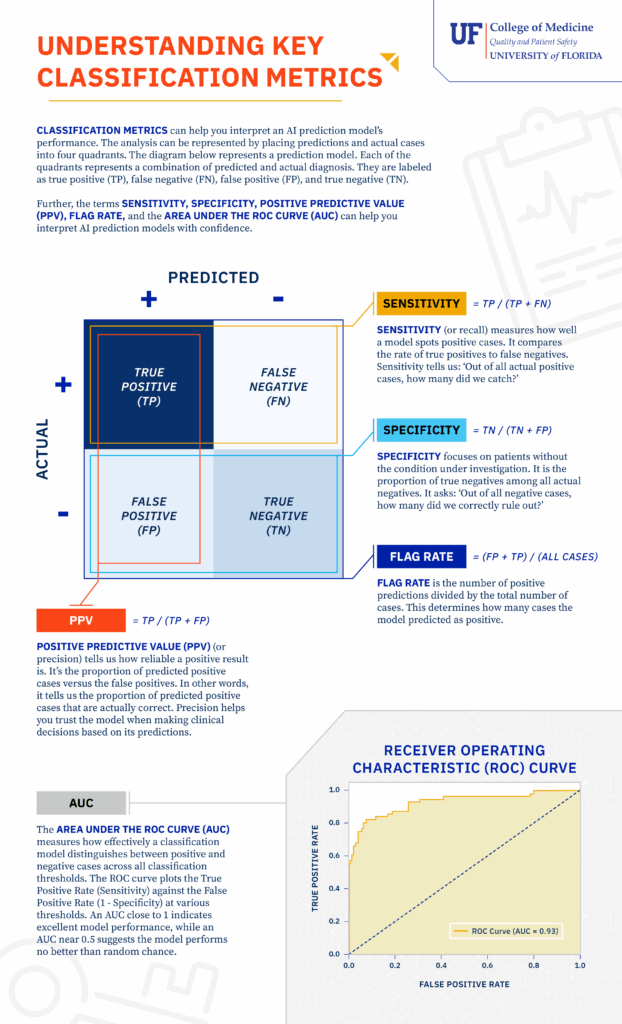Interpreting AI Predictions with Confidence
One of the most valuable functions of AI in medicine is its ability to predict whether a patient has a specific condition. However, not all predictions are created equal, and it’s essential to understand how to evaluate the performance of these classification models. By mastering a few key metrics, you can confidently interpret AI-driven insights and make informed decisions about patient care.
The resources on this page break down the core concepts of classification models, including the confusion matrix, sensitivity, specificity, positive predictive value (PPV), and the Area Under the ROC Curve (AUC). These metrics provide a framework for assessing how well a model distinguishes between positive and negative cases, enabling you to understand the reliability and potential impact of its predictions.
Resources
The videos and accompanying quick guide below offer a clear introduction to interpreting the performance of classification models in healthcare.
Understanding Key Classification Metrics
These resources explain how key metrics like sensitivity, specificity, PPV, and AUC work, and how to use them to assess the performance and reliability of AI classification models.

Download the Understanding Key Classification Metrics Infographic
Use this document for a comprehensive guide to understanding AI prediction model performance through a review of classification metrics.
Calculating Key Classification Metrics
In this video, learn how key classification metrics can help you interpret an AI model’s performance. Using a respiratory failure prediction model as an example, the video illustrates how sensitivity, specificity, flag rate, and positive predictive value (PPV) are calculated and how they inform clinical decision-making. The video also explains the Area Under the ROC Curve (AUC) and its significance in assessing a model’s overall accuracy. By understanding these metrics, you can confidently analyze a classification model’s results.

